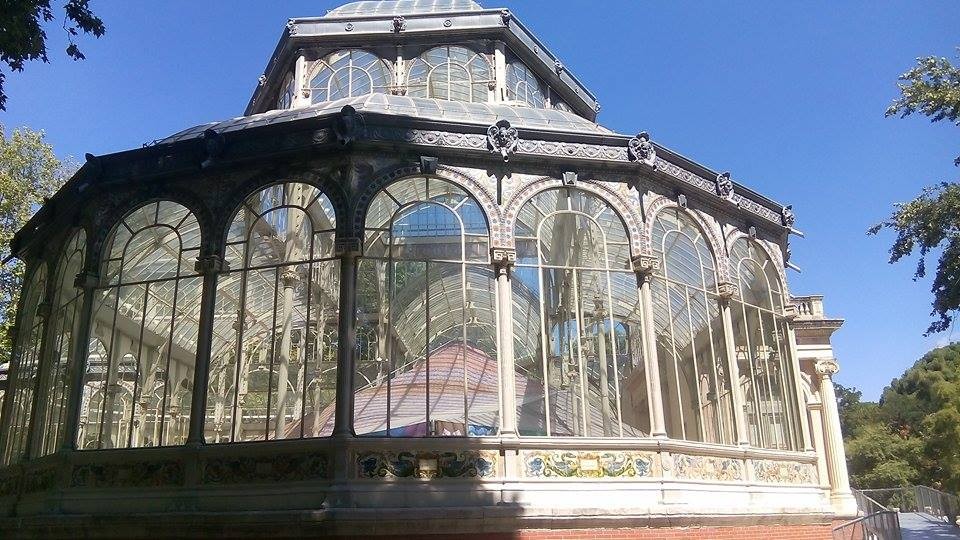Whilst walking through Buen Retiro, I found the Palacio de Cristal...
I found myself walking through Buen Retiro Park, which, to me, seems like Madrid's very own version of Central Park. The park is both huge and pretty, and when I thought that it couldn't get any more beautiful, I saw the Palacio de Cristal. From a distance, it looks so elegant and so delicate, as if there would be something very special inside... and indeed there was!

The Palacio de Cristal forms part of the second exhibition venue belonging to the Museo Reina Sofía. The building itself is not at all new, however, as it was built in 1887 by Ricardo Velázquez Bosco.
You will ask why it is made of glass... Well, originally, the Palacio de Cristal was built as a greenhouse for the "Exposición de Flora de las Islas Filipinas" (1887), so this is why cast iron columns and glass surfaces were used.

For a long time, it has been characterised for being used as an artistic exhibition space, and, now more recently, a contemporary one.
In front of the Palacio de Cristal, there is a beautiful lake and the entire building is surrounded by green areas that are really characteristic of Buen Retiro. Its high ceilings, its fine touches, and the way that light hits it allows you to take some excellent quality photos, giving it a very fragile appearance.
Tuiza: the cultures of the Bedouin tent
I was completely distracted and sucked in by the structure of the Palacio de Cristal, when a series of coloured pieces of fabric caught my attention, hung up as if it was a makeshift house. Although, whatever it was it didn't occupy the entirety of the building, just the central part.
I had found myself literally underneath one of the culturally-rich temporary exhibitions run by the Museo Reina Sofía.
This exhibition, carried out by Federico Guzmán, reflects and shares the traditional living spaces of desert nomads: a huge Bedouin tent, which, on this occasion, covers a large part of the palace. The tent's ceiling is made up of "benias", which are multi-coloured fabrics with different patterns. The sides of the tent play the role of the walls, known as "melhfas", which is the traditional female Saharan dress, worn by the women from Bojador.


This is a big collective work and one that has required a lot of solidarity. To build this tent, everyone has supported and participated, which, in the Arabic dialect of Hassania, is known as "Tuiza", and it's for that reason that the exhibition bears this name.
It's thanks to Federico Guzmán that we have the honour of using this space for what it was built for: encouraging both hospitality and communication between different cultures, which, in Madrid, is not at all a problem. Inside the tent, there are chairs upholstered in more fine acrylic fabrics (benias) where you can sit and chat, as well as sales of different handmade gifts and traditional drinks, the cost of which is whatever you want it to be in your support for the man selling them.
Don't miss out on the cultural events that take place in the tent, like poetry readings, tea ceremonies, conferences and cinema screenings.


When can I visit the exhibition?
The exhibition will be open from April 16 to August 30, 2015, and will be open whenever the park itself is open.
How much does it cost to visit the exhibition?
Entrance to the exhibition is free!
Things to bear in mind:
- You cannot use selfie sticks to take photos inside the tent itself.
- You will have to get around a large part of Buen Retiro on foot, so wear comfortable clothing, put on plenty of sun cream, and bring a hat and sunglasses.
- Bring your water bottle: there are plenty of places where you can fill it up.
 What to see Madrid,
Madrid,
Spain
What to see Madrid,
Madrid,
Spain


























